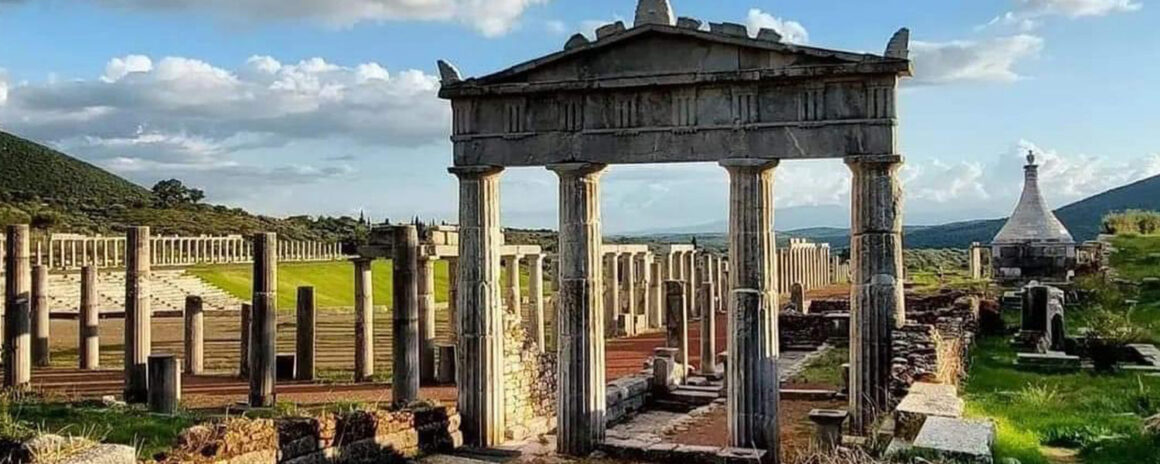Ancient Messina

Messina was an ancient city of Messinia, in the southwestern part of the Peloponnese. It is located in the current village of Ancient Messini, which until 2002 was called Mavrommati Ithomis.
The ancient city was founded in the winter of 370 BC. – 369 BC by the Theban general Epaminondas, after his victory over the Spartans at the battle of Leuctra and his invasion of Laconia. Epaminondas freed Messinia from Spartan influence and chose the foothills of Mount Ithomi to build the capital of the free Messenians. It was built almost at the same time as the Arcadian Megalopolis, so that Sparta could be excluded from hostile states and its influence outside Laconia would disappear.
The wall that surrounded Messina is extremely long (perimeter 9 km) and at the time of Pausanias it was already entirely made of stone, which caused him great surprise as the adobe superstructure was common. It had two monumental gates, the Arcadic (or Megalopolis gate) and the Laconic. At regular intervals it was reinforced with two-story stone square and round towers. Today it is best preserved on its northern side, on the side of the Arcadian gate. From the preserved parts and the foundations you can determine almost the entire line followed by the wall.
All the buildings of Messina have the same orientation and are part of the urban planning canvas created by horizontal (east-west direction) and vertical (north-south direction) streets. This urban planning system is known as Hippodamus, after the original inspirer and creator of the architect, town planner, geometer and astronomer of the 5th century BC, Hippodamus from Miletus.

